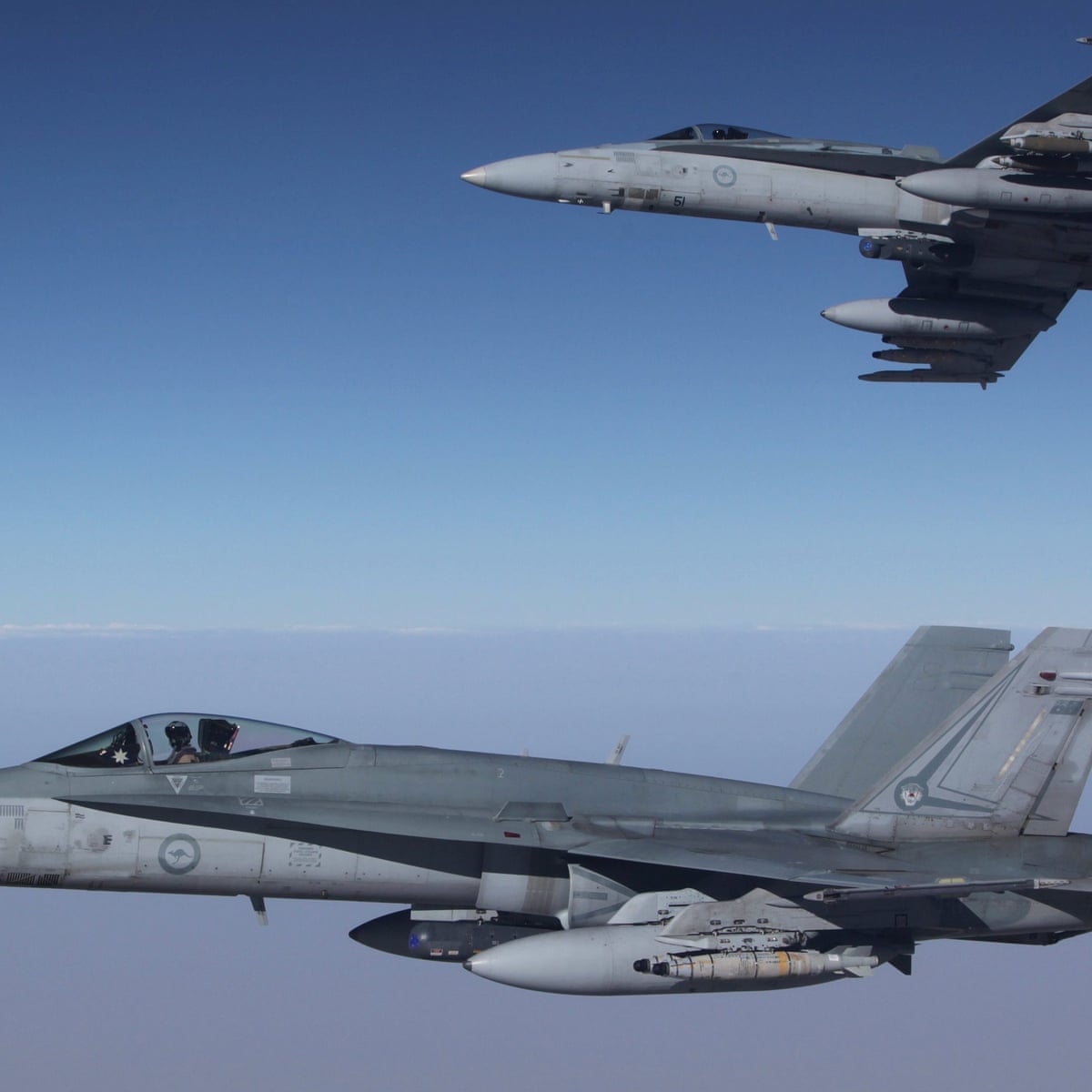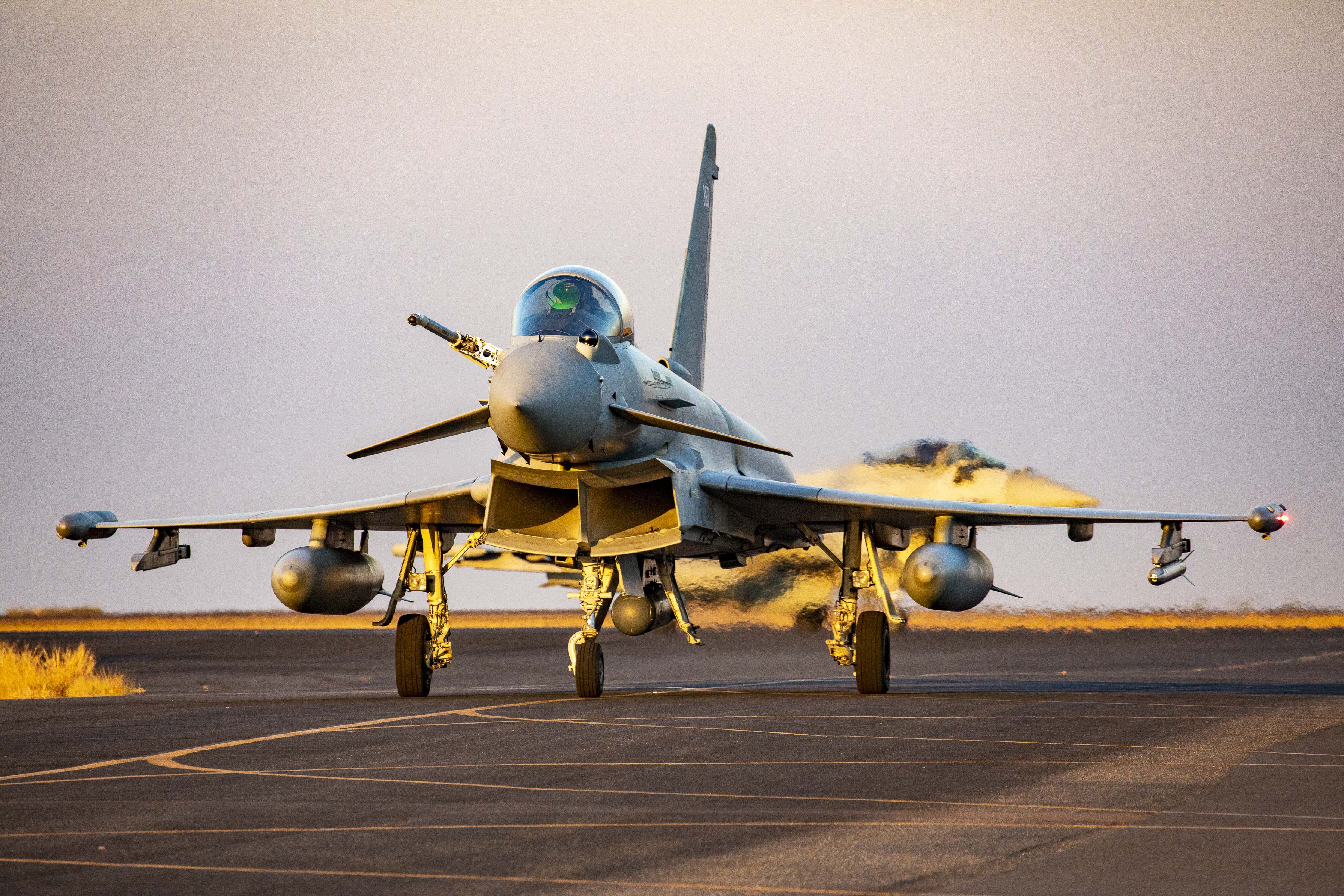Australian Fighter Jets - The Royal Australian Air Force (RAAF) operated the McDonnell Douglas F/A-18 Hornet fighter aircraft from 1984 to 2021. The Australian government purchased 75 A and B variants of the F/A-18 to replace the RAAF's Dassault Mirage III Fighters in 1981. . Hornets served in the RAAF from 1984 to 1990. Four Hornets were destroyed in flight accidents in the late 1980s and early 1990s.
The RAAF Hornets were on a combat deployment for the first time as part of Australia's contribution to the 2003 invasion of Iraq. During the invasion, 14 Hornets patrolled and conducted close air support operations over Iraq to assist coalition ground forces. RAAF F/A-18s also secured the US airbase at Diego Garcia between late 2001 and early 2002 and maintained a number of high-profile uses in Australia. Between 2015 and 2017, a Hornet detachment was deployed to the Middle East and struck IS targets as part of Operation Okra.
Australian Fighter Jets

In 1999, the RAAF underwent a series of upgrades for its Hornets to increase their effectiveness. However, the aircraft became increasingly difficult to operate and risked being destroyed by warplanes and air defense systems operated by other countries. According to Australian government planning, they will be replaced by 72 Lockheed Martin F-35 Lightning II fighter jets. The Australian government put the Hornets for sale when they are no longer needed by the RAAF and signed an agreement to sell 25 units to Canada in early 2019. Eight F/A-18s will be preserved for historic purposes in Australia, and the rest were sold to an American air combat training company in May.
Chinese Jet Came Within 10 Feet Of U.s. Military Aircraft, U.s. Says
The service published an Air Personnel Requirement for new warplanes in December 1971, which received more bids than expected from manufacturers. At the time, the RAAF was expected to begin phasing out Mirage IIIs in 1980.
In 1973, a team of RAAF personnel inspected the McDonnell Douglas F-15 Eagle, Northrop YF-17, Saab 37 Vigg, and Dassault Mirage F1 programs, but recommended delaying decisions on a suitable replacement so that some new fighters were expected. . It may also be considered too early to be available.
In August 1974, the Australian government decided to delay the fighter replacement project and extend the operational life of the Mirage IIIs until the 1980s. One of four Mirage III-equipped squadrons was also disbanded at this time.
Work on the Mirage replacement program resumed in 1975, and the Tactical Fighter Project Office was established in 1976 to oversee the RAAF's selection process for its next fighter.
Australia To Sell Retired F/a 18 Hornet Fighters To Private Aggressor Firm Air Usa
A request for proposal was published in November of that year and received a huge response. In March 1977 the office chose to focus on the McDonnell Douglas F-18A and F-18L alongside the F-15 Eagle, General Dynamics F-16 Fighting Falcon, Dassault Mirage 2000 and Panavia Tornado; The F-18A was an aircraft carrier-based fighter developed from the YF-17 for the United States Navy, and the F-18L was a land-based variant of the design. The Grumman F-14 Tomcat was also evaluated by the project office, but was deemed ineligible and was never officially shortlisted.
In November 1978, the F-15 and Tornado were removed from the list of aircraft considered. The Tornado was excluded primarily because it was an attack aircraft and had limited air-to-air capability. While the F-15 is an impressive aircraft that meets or exceeds almost all of the RAAF's requirements, it was believed that the Air Force did not need a fighter with such advanced capabilities and putting it into service could destabilize the Australian region.
More detailed evaluation of the remaining aircraft was carried out in 1979. Wing Commander (and later Deputy Air Marshal) Bob Richardson tested a Mirage 2000 in April 1979, and although the aircraft has excellent aerodynamics, its avionics, radar, fuel system, cockpit and weapons capabilities are lower than those of the United States. IT. designs.

Richardson also tested a YF-17 used as a demonstrator for the F-18L in mid-1979 and was impressed with its capabilities. At this time, the F-18L had not been ordered, and the RAAF did not want to risk becoming the main customer of the design.
Fighter Jet: Australia Says Chinese Fighter Jet Intercepted Its Surveillance Aircraft
At the same time, the RAAF rejected an offer of F-14 Tomcats ordered by the Iranian government but not delivered as a result of the revolution in that country. Although Tomcats were available at a very low price, the air force decided that the aircraft was too large and complex for its requirements.
When the Mirage 2000 and F-18L were rejected, the RAAF had to choose between the F-16 and F-18A. Richardson and several other RAAF pilots tested United States Air Force (USAF) F-16Bs in 1979 and 1980 and reported that the aircraft had excellent performance but could be difficult to control at times. The evaluation team was also concerned about the reliability of the F-16's gene and considered the aircraft to be technologically immature. It was also noted that the radar of the aircraft is lower than that of the F-18A, and that the F-16s cannot fire the air-to-air missiles and long-range anti-ship missiles that the F-18A can fire. business.
By contrast, the evaluation team was impressed with the F-18A and rated it as a more robust and survivable aircraft than it was designed to operate from carriers; These features are important for bare-base operations in northern Australia.
Richardson and three other RAAF pilots piloted the F-18AS and reported that the aircraft was well-handled but had some faults in the flight control system and engines; The evaluation team did not seem to have major flaws.
Canada To Buy Fleet Of 30 Year Old Fighter Jets From Australia In Snub To Us
The F-18A's twin-engines are considered to be its main advantage over the single-engine F-16, as research conducted by the evaluation team revealed that the wear rate for single-engine fighters is twice that of twin-engine airplanes. .
Overall, the RAAF decided that both the F-16 and F-18A were too immature to be received in 1980 as originally planned, and recommended that the government delay it by one year.
The government accepted the RAAF's recommendation and delayed its decision to replace the Mirage III until late 1981. This gave Gerald Dynamics the opportunity to present the improved F-16C to the RAAF. The aircraft's capacity was closer to that of the F-18, as they were equipped with BVR missiles. Richardson and another RAAF pilot tested an F-16C in May 1981.
The F-18 design was also developed in 1981 and was renamed the F/A-18. When RAAF test pilots flew the plane in 1981, they found that the shortcomings they had identified in 1980 were now rectified.
Most Of The Used Fighter Jets Bought By Canada Are Still Not In Service, Mps Hear
Overall, the RAAF concluded that while both aircraft met their requirements and the F-16 was less impressive, the F/A-18 was of superior design because it was more technologically mature, easier to maintain during operational deployments, and probably very would have had more. lower wear rate.
The government accepted this recommendation and announced on 20 October 1981 that 75 F/A-18s would be ordered. As part of the announcement, Secretary Jim Keel acknowledged that it would be much cheaper to purchase the F-16, but said the F/A-18's lower operating costs and higher wear rate had greatly reduced the difference in Living costs. from two designs.
Instead of ordering the aircraft directly from McDonnell Douglas, the Australian government purchased its F/A-18s through the US. IT. The government's Foreign Military Sales (FMS) program.
Airplane order via USA BT. The government allowed the RAAF to take advantage of the superior purchasing power of the United States.
More Firepower On Australian Defence Force Shopping List
This led to a complex arrangement with the aircraft being ordered by the United States. IT. government handed over to the USA
The RAAF's order for 75 Hornets consisted of 57 single-seat variant A fighters and 18 two-seat variant B operational trainers.
It was planned to allocate 16 aircraft to each of the three combat squadrons and an operational conversion unit that will operate the F / A-18; 12 of these were expected to be operational at any time, while the other four were under Maintenance. . . The remaining Flame Hornets were designated a "half-life attrition purchase" and would replace the aircraft expected to disappear in 2000; As it happened, this greatly exceeded the actual losses of the RAAF.

The total cost of the F/A-18 program, including aircraft, spares, other equipment and modifications to the RAAF's war bases, was estimated at $2,427 billion in August 1981, but was quickly revised upwards as Australia depreciated. dollars at this hour
Years Of Fatigue Testing Has Proved The Longevity Of One Of The World's Most Popular Trainer Jets
The Australian hornet is very similar to the standard US hornet. IT. Navy variants, however, included a number of minor changes. These included the instrument landing system / VHF omnidirectional range (ILS / VOR) system, the high frequency radio, the addition of a different ejection seat assembly, and the deletion of all equipment used only to launch the aircraft from catapults.
Additionally, two of the Australian aircraft are equipped with flight testers so they can be used as part of trials.
The government tried to use the Mirage III replacement program as a way to increase these.
Australian air force fighter jets, navy fighter jets, northrop grumman fighter jets, air force fighter jets, australian air force new fighter jets, us navy fighter jets, australian jets, fighter jets, lockheed martin fighter jets, diecast fighter jets, australian fighter, metal toy fighter jets

0 Comments